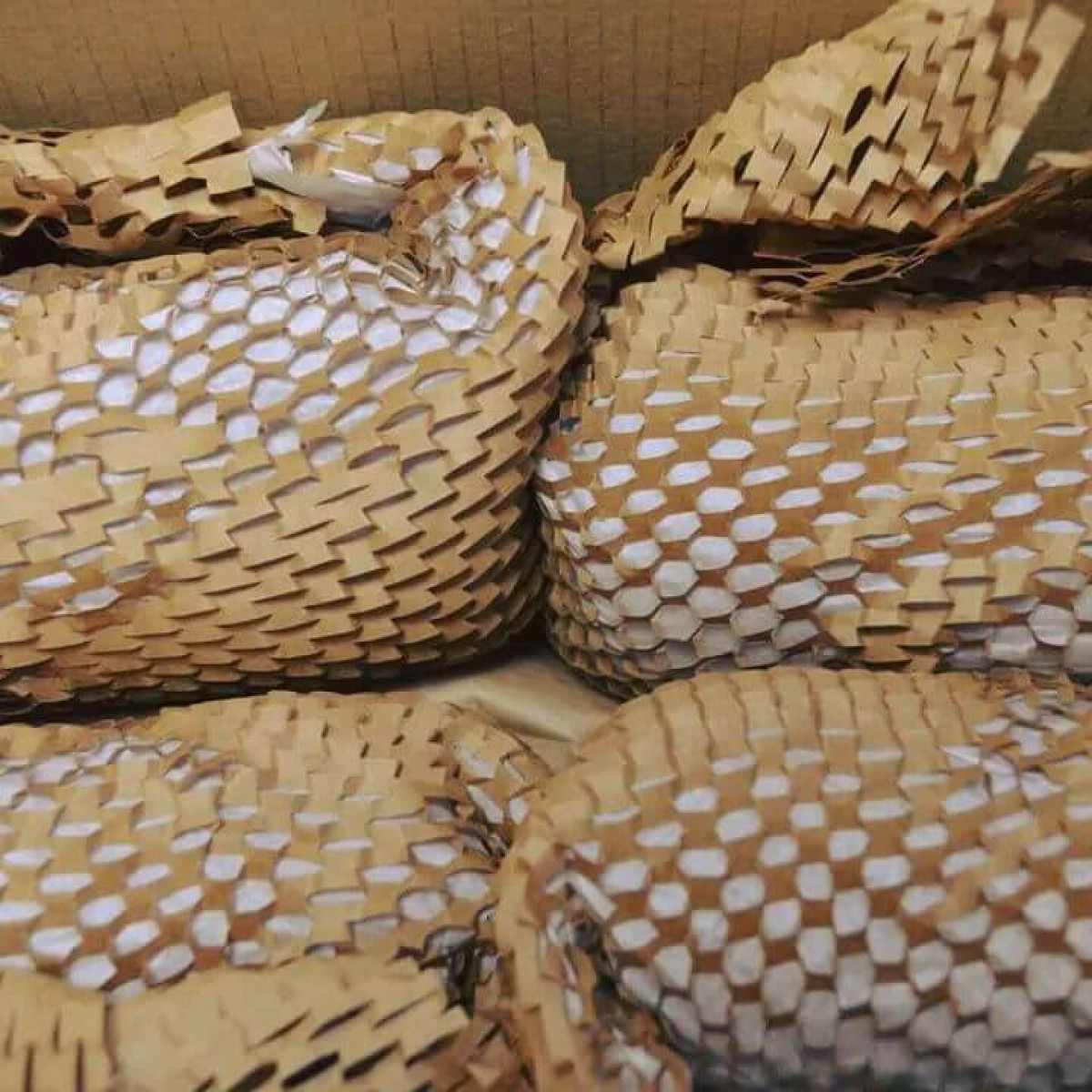Outer Packaging
Outer Packaging
|
Product |
Made from |
Recycled content |
Bio-degradable |
Recyclable |
Sustainable resources |
|
Outer cardboard boxes |
Trees and/or recycled pulp |
72-100% |
√ |
√ |
√ |
|
Geami Paper protective wrapping |
Trees |
? |
√ |
√ |
√ |
|
| |||||
|
Paper loose fill |
Trees |
0% |
√ |
√ |
√ |
|
Box labels |
Recycled paper/ water based or rubber adhesive |
100% |
√ |
√ |
√ |
|
Tape |
Paper/water based adhesive |
0% |
√ |
√ |
√ |
Before we embark on what we use, there is the question of how does Steenbergs reduce its outer packaging, i.e. the reduce part of reduce-reuse-recycle? The main route we have used is by getting as many of our boxes as practicable made as bespoke products to fit larger, case-sized quantities of these products, which minimises the need for protective packaging. Then, wherever possible, these fold into themselves rather than being open ended, so we need to use less sealing tape. Similarly, wherever possible, we get the packaging suppliers of our primary packaging to supply these in the same outer case quantities that we retail them in, so for example our case size for tea tins is four, so they arrive to us packed empty in fours and we can then reuse that box, i.e. we both reduce and reuse. For internet and mail orders, we use a wide range of off-the-shelf corrugate boxes to try and get as close to the right size needed for each individual package, hence we can minimise wasted board and the need to use lots of paper loose fill.
We pack our products into corrugated boxes, which we either purchase from Macfarlane Packaging (packaging wholesaler for general boxes and materials for mixed boxes of products) or are manufactured for us by Garthwest or the manufacturers of our containers (packaging for Steenbergs products). All these products are biodegradable and recyclable, as well as being reusable (although we do not anticipate many people will actually reuse them). The recycled content varies in the range 72 - 100%; in overview, the rougher looking boxes are made from 100% recycled material, while those with a smoother finish contain some virgin paper to provide that smarter finish, for example in our gift boxes. Where the boxes include printing, the printing inks used are water-based inks, so while they are still inks they have a lower environmental impact than some printing inks; in addition, we try as much as possible to minimise the amount of printing on the boxes to reduce the potential for sustainability issues arising from printing inks. For details on the paper recycling system, you could look at Recovering and Recycling Paper from the Confederation of Paper Industries, which gives a good overview of the paper and pulp sector in the UK.
Within the boxes, we use a variety of different protective packaging products to try and provide all round protection for the products we send out, most of which are fragile being made from glass. These products are biodegradable and compostable and do not contain especially nasty chemicals. The following provides an overview of the products we may use in order of what you might see as potential issues:
No bubble wrap here: Geami is a two leaf protective paper solution, using a softer tissue paper on the inside to protect the fragile items. It is fully compostable, recyclable and biodegradable. We get it from Macfarlane Packaging.

Paper voidfill packaging: the other voidfill we use is brown kraft paper that is crinkled up. We get this kraft paper from Macfarlane Packaging under the product name, FillPak Paper, supplied by Ranpak Europe. FillPak is made from sack kraft paper, which is either 100% virgin for the 70g, but it comes from a sustainable source; kraft paper uses virgin pulp as kraft is strong paper (“Kraft” means “strong” in German), so requires a high strength of fibres which are only obtained from virgin paper. There is a 50g version, which is 100% recycled pulp, but we found it useless as you need more paper and because it has no strength in the fibres did not actually do its job very well. FillPak is carbon neutral, recyclable, biodegradable and compostable, as well as being suitable for landfill. For more information, visit Ranpak’s website. Shredded paper is similarly biodegradable, compostable and suitable for landfill.
Address labels: we use a number of different options for these. Our core address labels are laser printed labels onto Avery QuickPEELTM recycled laser labels, which we use for our box address labels and labels for palletised deliveries. These are 100% recycled paper labels, packed in boxes of recycled cardboard and use water-based, eco-friendly adhesive. The labels for couriers are on labels provided to us by the courier service, but this means that they do not have any additional environmental features at this stage. However, all the labels we use are paper based and are biodegradable, compostable and can be recycled within the normal paper and pulp recycling cycle.
Box tape: we use paper tape to seal our boxes, which is supplied by Opak. Being paper based, the tape material is also sustainable. The paper tape is a saturated crepe paper tape provided. In this case, the adhesive is natural rubber and the paper is brown saturated crepe paper. The paper is kraft paper which is 100% virgin kraft, while the core of the tape rolls is made from 100% recycled pulp and is biodegradable, recyclable and sustainable.




